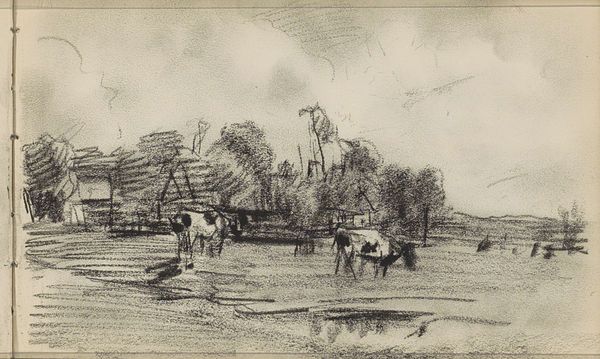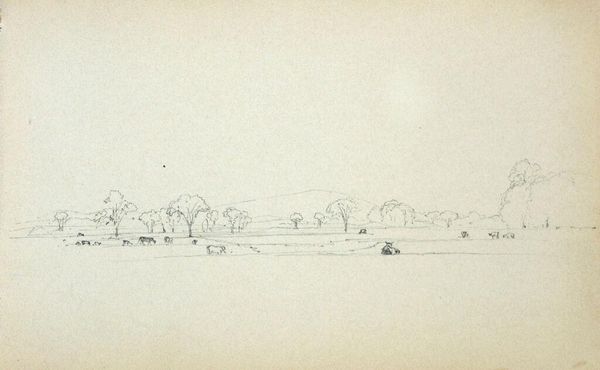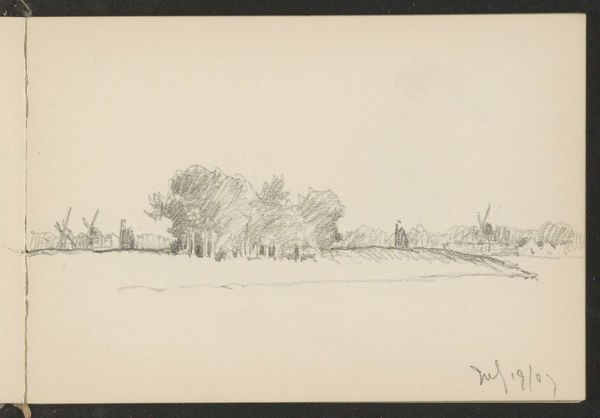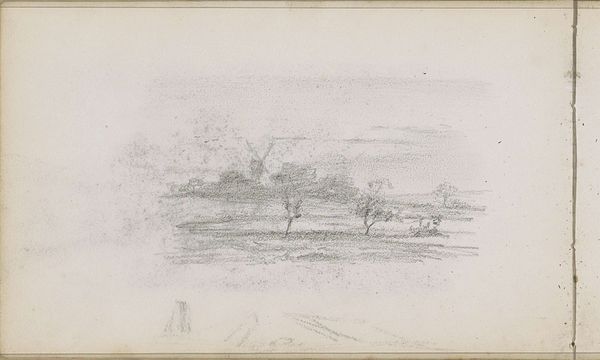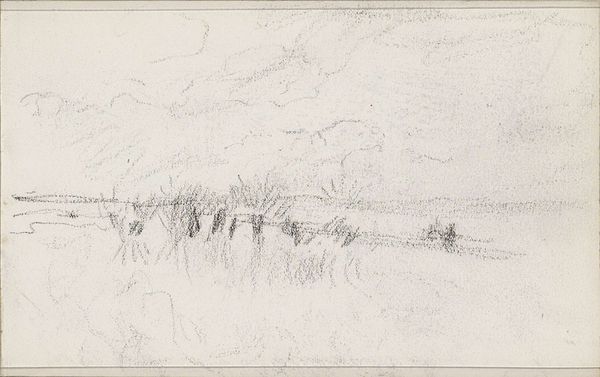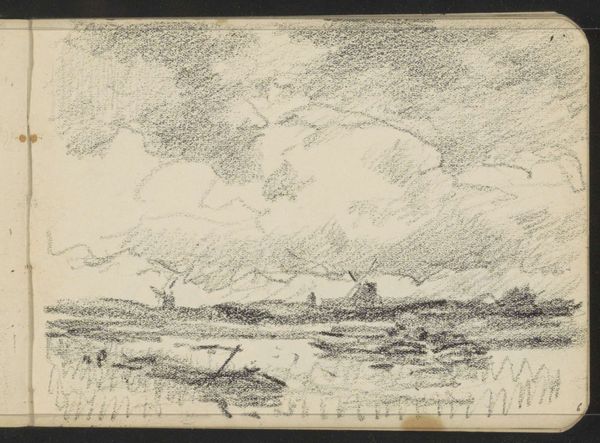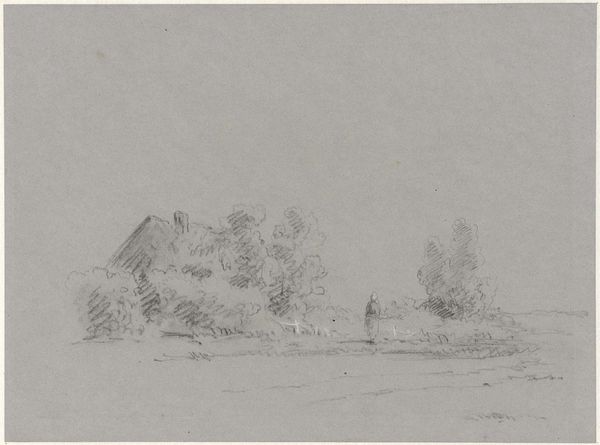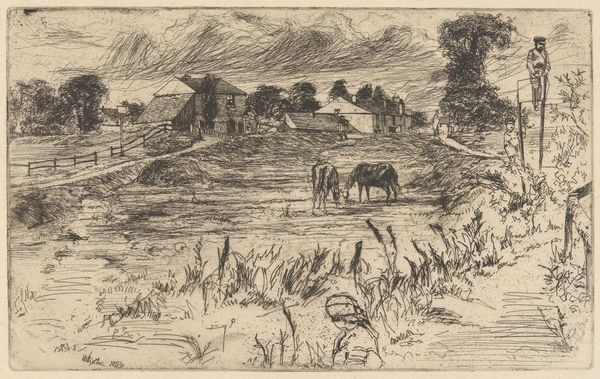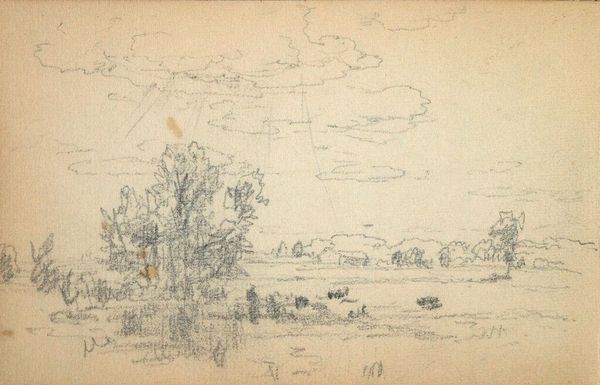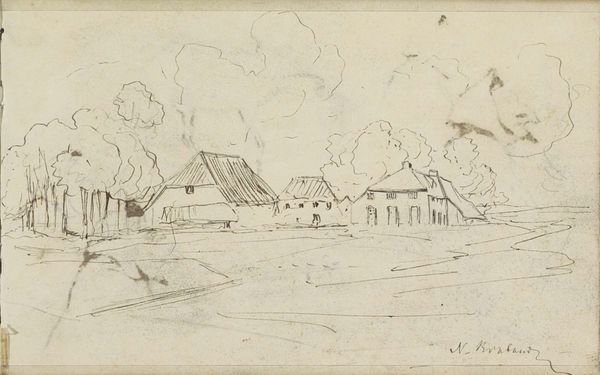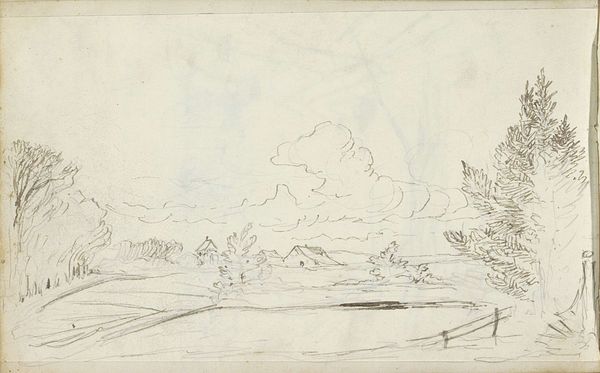
Copyright: Rijks Museum: Open Domain
Curator: This pencil drawing is titled "Landschap," which translates to "Landscape." Johan Antonie de Jonge created it sometime between 1901 and 1927, likely en plein-air. Editor: Oh, this has that beautiful, breezy melancholy about it! I’m thinking of quiet afternoons and long shadows... It’s incredibly spare, yet suggests so much space. Curator: The impressionistic style certainly evokes a mood more than depicting concrete details. The repeated motifs of the trees create a sense of rhythm across the horizontal plane. Are they meant to evoke any specific feeling? Editor: It's funny you mention the trees. To me, they feel like solitary figures caught in thought, punctuating this vast expanse. They introduce a sense of quiet introspection amidst the openness. Curator: De Jonge clearly prioritizes capturing the immediate impression of the scene. His marks remind us that all seeing involves time and subjective understanding. Did the impressionist landscapists aim to do this more than their predecessors? Editor: Absolutely, I think it’s about capturing a feeling, the transience of light and shadow, of weather, or perhaps a feeling of what it is like to be alive in this world! It has this lovely feeling, like a breath that one forgets but fills us with the desire to just sit under those lonely looking trees. I could sit with this for hours and conjure up memories from long ago. Curator: Indeed. It exemplifies how seemingly simple sketches can function as powerful vessels of memory and evoke contemplation. The universal resonance makes it stand out, despite its minimalistic nature. Editor: Right? I think I could happily get lost wandering around this image forever, conjuring all kind of daydreams!
Comments
No comments
Be the first to comment and join the conversation on the ultimate creative platform.
